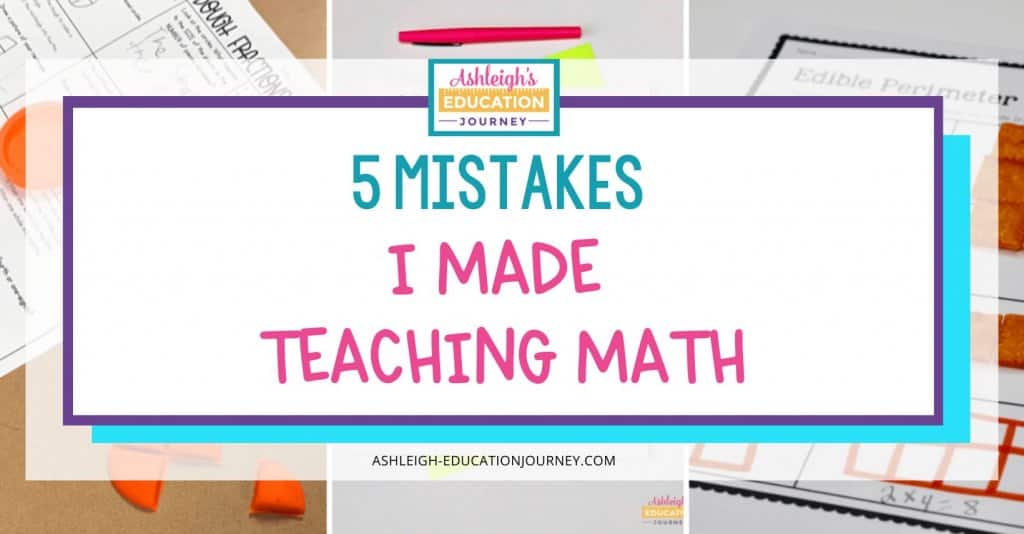
You’ll never see me pretend to be the perfect teacher or to act as if I have it all figured out. Typically, anyone who alludes to those claims isn’t actually teaching! You also won’t see me assert that there is only one right way to teach. I can’t pretend to know the needs of every student or every classroom. Teaching is highly personal and we must continuously adjust our instruction as students, curriculum, and school culture changes. However, there are some common mistakes made when teaching math. I’ve done each of these things, so I’m speaking from personal experience. I’ve also seen the negative results of these mistakes, as well as the tremendous shift in student success when I made necessary changes to my own instruction.
Incorrect Vocabulary or Phrasing
It’s so easy to use incorrect vocabulary or phrases, and while it may not seem like a big deal, those misused terms and phrases may create a lot of misconceptions for our students.
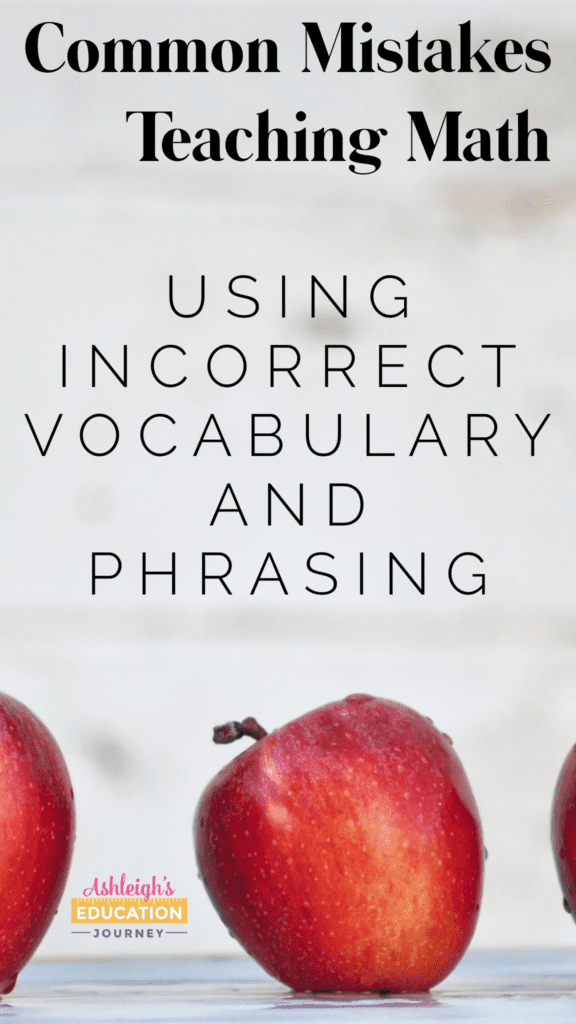
The equal sign means “The answer is”
Many students are taught to view the equal sign as a symbol that means “the answer is” or “ta-da”. Instead, the equal sign in math means what is to the right and left of the symbol have the same value.
Subtract the smaller number from the larger number
Many students are told to always write the big number first when they subtract. While this subtraction rule may work for younger grades, this is not the case when students add and subtract positive and negative integers. This rule may also create a problem when students subtract multi-digit numbers. Students often overgeneralize previous learning and subtract the smaller number from the larger one digit-by-digit.
Multiplication makes numbers bigger or division makes numbers smaller
Most of the time in the elementary classroom, multiplication makes numbers bigger. However, once students are not exclusively multiplying whole numbers, this is not always true. Just as multiplication does not always make numbers larger, the same can be said for division. Division does not always make numbers smaller. Students must develop number sense that extends beyond whole numbers.
Always divide the larger number by the smaller number
Students are often told that they always divide the larger number by the smaller number. However, this is not always the case. When this concept “sticks”, it is extremely difficult to undo later. One way to avoid the misconception of putting the larger number first is to focus instead on the parts of an equal sharing problem.
When you multiply by 10, add a zero to the number
A major part of third and fourth grade math is teaching students how to multiply by multiples of ten. Students are often told that when you multiply a number by ten, just add a zero to the end of the number. However, once again, this isn’t always true, leading to one of the common mistakes when teaching math. When students multiply decimals by ten and powers of ten, they do not add a zero to the end of the number. Not only does the rule lead students to misconceptions, but it also prevents students from developing a deeper understanding of our base-ten system. Students should learn that when multiplying by 10 or 100, each digit is shifted to the left on a place value table, because they are adding another place to the number. You can learn more about how I teach multiplying and dividing by multiples of ten here.
In a fraction, the big number always goes on the bottom
Many times students are told to always write the big number on bottom in fractions. Not only does this rule prevent authentic understanding of the concept of fractions, it is not an accurate rule. When students write improper fractions in fourth grade, the numerator is greater than the denominator. Students tend to manipulate fractions by rote rules and memorization, rather than try to make sense of the concepts and procedures.
Math Vocabulary Resources
To help teach math vocabulary, I have printable Word Walls available, in both 3rd grade and 4th grade versions.
Proceduralize Problem Solving
When I first started teaching, I taught for problem solving. I taught a skill and students later used that skill to problem solve at the end of the unit. The problem with this approach is that it often places the student as a passive learner, dependent on the teacher to give step-by-step directions, rather than as an independent thinker who can develop an approach to solve the problem. Students quickly become accustomed to being told how to approach the problem and are not likely to attempt a new problem without explicit instructions.
I now try to teach through problem solving. This approach is when students learn through real contexts, problems, situations, and models. It students to build meaning for the concepts so that they can move to abstract concepts.
Of course, it is important to teach students about problem solving strategies. These are methods of approaching a task that are completely independent of the specific topic or subject matter. I like to name or label strategies because that provides a simple way for students to talk about their methods and for me to give suggestions. You can read more about how I teach problem solving strategies here. Some strategies include:
- Draw a picture, act it out, use a model.
- Look for a pattern.
- Guess and check.
- Make a table or chart.
- Make an organized list.
- Write an equation.
It is important not to take the problem out of problem solving by telling students the strategy they should pick and how to approach the problem. Instead, share a problem that lends itself to a particular strategy and allow students to solve the problem any way they like. During the sharing of results, highlight student work that efficiently and even inefficiently solves the problem.
Inefficient Use of Manipulatives
I used to believe that any lesson that involved manipulatives was a highly conceptual and engaging lesson. Unfortunately, that is not always the case. It is so tempting to show students exactly how to use manipulatives for a particular concept. When we do this, students typically mimic the directions, and it may look as if they understand. However, students may be mindlessly following what they see.
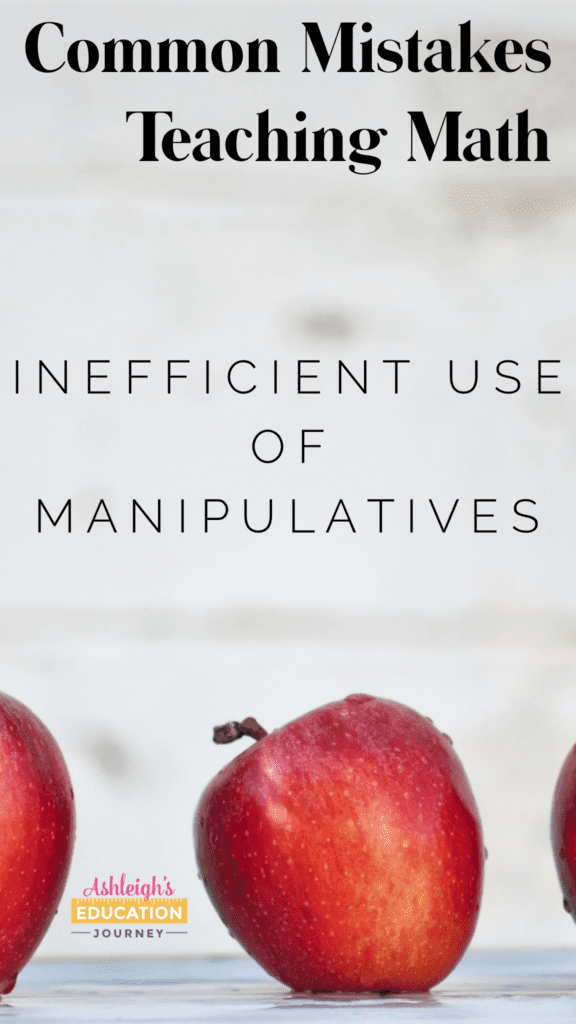
As adults using manipulatives we “see” concepts that we already understand. For children who do not have the same understandings, some misconceptions may develop with the use of manipulatives. We cannot assume that students will automatically draw correct conclusions by interacting with a particular manipulative. We must guide students into developing an understanding, while at the same time not telling exactly how to use the procedures.
You can read about how I use math manipulatives here.
You can read more about using digital manipulatives here.
Unbalanced Instruction
As the daughter of a teacher and with 18 years in the classroom, I’ve seen firsthand how the pendulum in educational trends swings back and forth. If you’ve been teaching for a while, you too know that everything comes back-just with a new name or new packaging.
Early in my teaching career, I was easily influenced and wanted to jump on each new bandwagon. Fortunately, I was supported by veteran teachers who told me “Don’t throw the baby out with the bathwater.”
Good instruction rarely takes an all-or-nothing approach. Instead, we must use a balanced approach. I’ve seen classrooms that only incorporated constructivist instruction with no practice or skills taught. Then there are other classrooms that only teach through procedures without any conceptual instruction. Of course, there are many other ways to have unbalanced instruction.
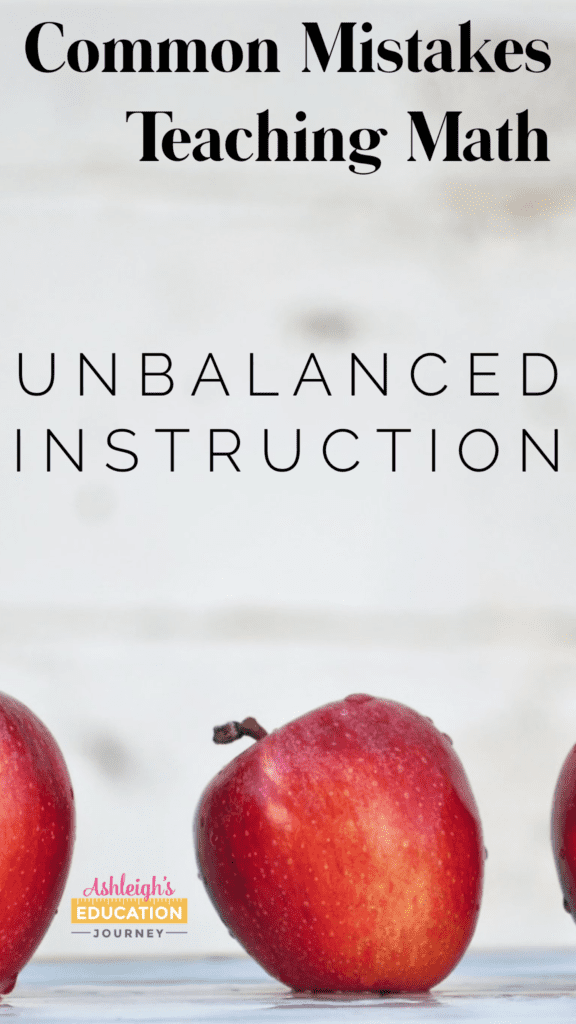
Instead, we must focus on the development of conceptual and procedural understanding, skill development and problem-solving. Balanced instruction can incorporate direct instruction, inquiry learning, collaborative groups, independent learning, centers, games, and more. Once conceptual understanding has been established, purposeful practice helps students develop computational and procedural fluency. This practice that strengthens the connection between skills, concepts, strategies and thinking.
Overassessing or Grading
When I first started teaching, I felt the need to take an abundance of grades. I remember sitting in a professional development course when the speaker said “You grade what’s important.”
I’ve since moved away from that approach. Yes, I look at student work and give feedback, but I do not frequently record formal grades. Instead, I have a slew of formative notes and marks, but I no longer attempt to assign daily grades.
We have to be careful that our instruction does not penalize students for failure to immediately learn a concept. When introducing a new concept or skill, students need time to struggle, to explore, to receive and process our feedback, and this can rarely be completed in one class.
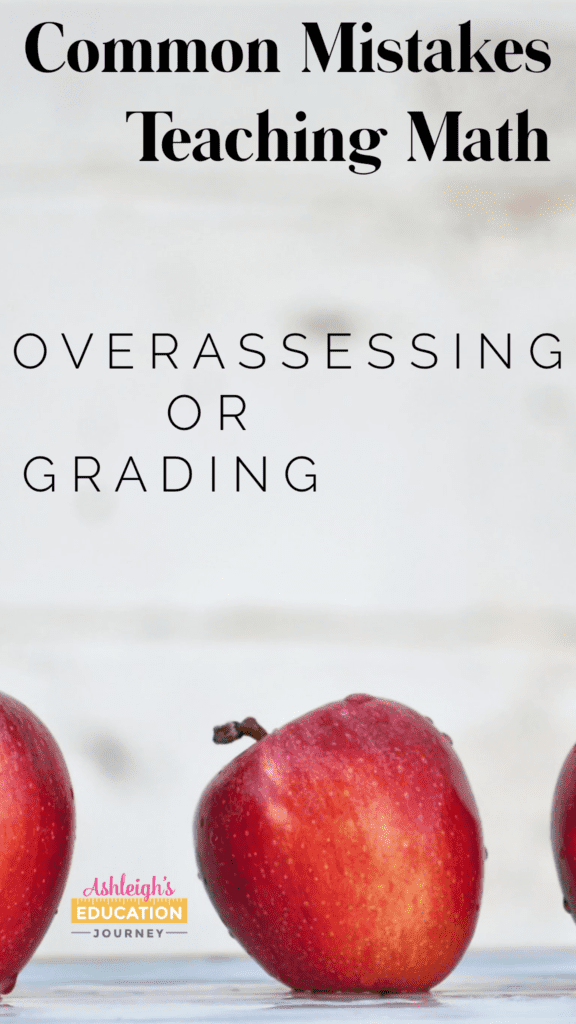
I also try to emphasize learning from mistakes and provide regular feedback.
When students are given feedback, as they work out a problem, they are given the opportunity to learn from their mistakes instead of repeating them. I often mark a dot on missed problems and have students find and correct their mistake. This forces students to go back and look at their work, evaluate it, and correct it. That is so much more valuable than me simply marking it wrong and returning the paper to the student. (This is different on our formal summative assessments.)
I’ve also learned to dramatically reduce the quantity of practice problems I give students. If they can get three correct, then there’s no need to practice with 30 problems. This reduces the monotony of practice, the time spent grading, and it gives you more time to focus on feedback.
I’d call that a win-win!


